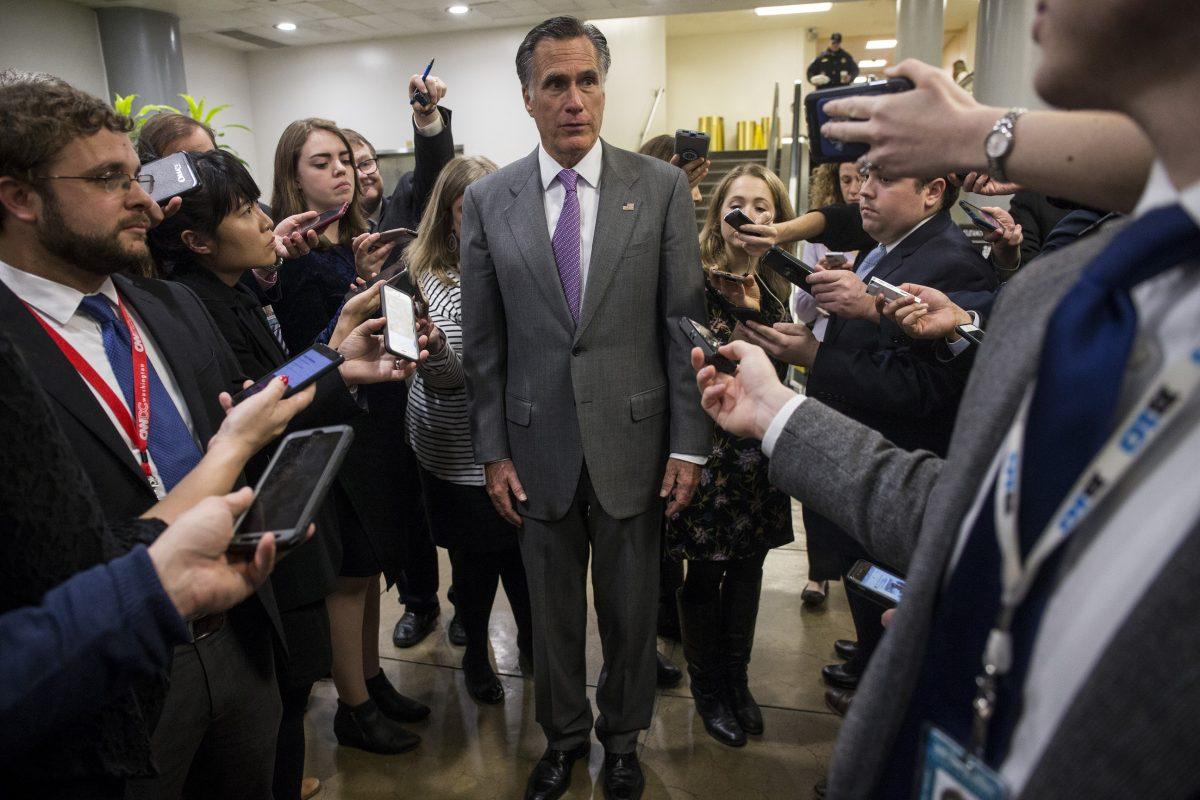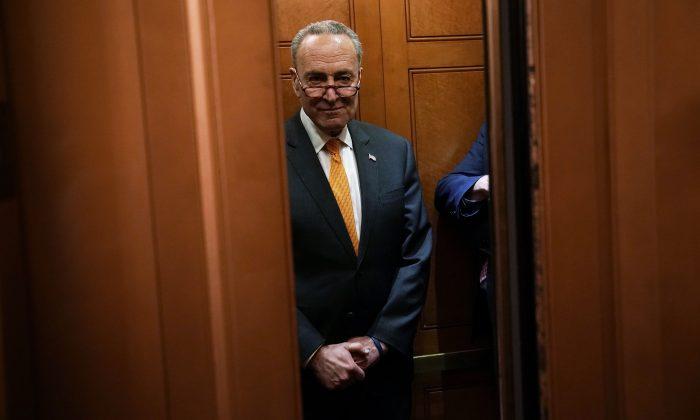The Senate failed on Jan. 24 to pass either of two bills that were aimed at ending the partial government shutdown.
Two Republicans went against the Trump plan in the Senate: Tom Cotton of Arkansas and Mike Lee of Utah. One Democrat, Joe Manchin III of West Virginia, sided with Trump, and three senators abstained: Rand Paul (R-Ky.), Jim Risch (R-Idaho), and Jacky Rosen (D-Nev.).
Rosen also abstained from the vote on the Democrats’ plan. All other Democrats voted for it, joined by six Republicans: Lamar Alexander of Tennessee, Susan Collins of Maine, Cory Gardner of Colorado, Johnny Isakson of Georgia, Lisa Murkowski of Alaska, and Mitt Romney of Utah. Paul and Risch abstained, along with Richard Burr (R-N.C.).
Meanwhile, the House of Representatives failed, again, to pass a measure to pay federal workers affected by the shutdown.

About quarter of the government ran out of money on Dec. 22, 2018, as Trump and the Democrats failed to reach a deal on border-security funding.
Even if the Trump plan could pass in the Senate, it most likely would have been blocked in the House of Representatives, where Democrats hold a majority.
No Compromise
Trump took a series of steps to illuminate the reasoning behind the border-wall project and to make it more palatable to Democrats. He detailed the amount of drug and human trafficking as well as other crime connected with illegal border crossings, he invited border-security personnel to make the case for the wall’s necessity, and he created a team led by Vice President Mike Pence to hear out individual Democratic lawmakers.House Speaker Nancy Pelosi (D-Calif.) rejected the proposal before Trump started his speech.





